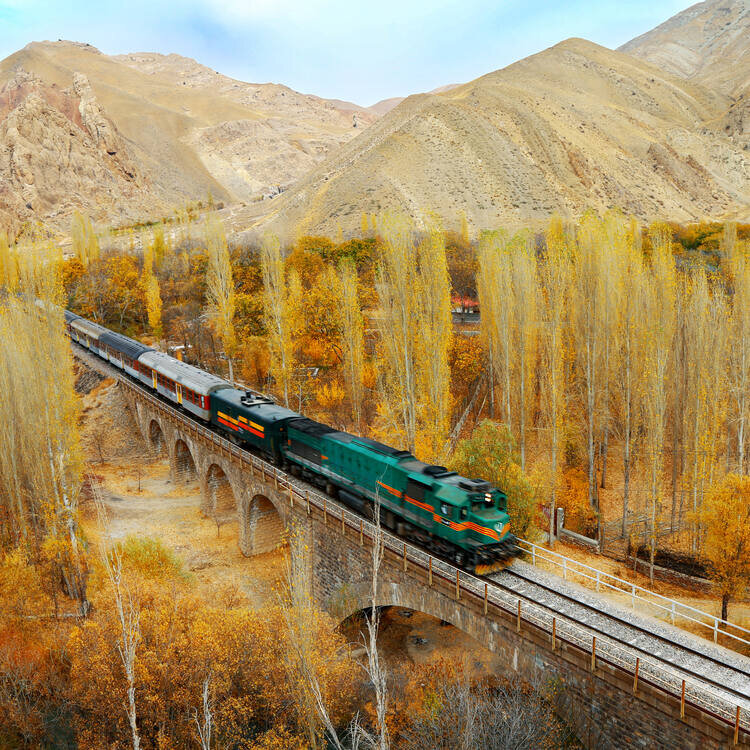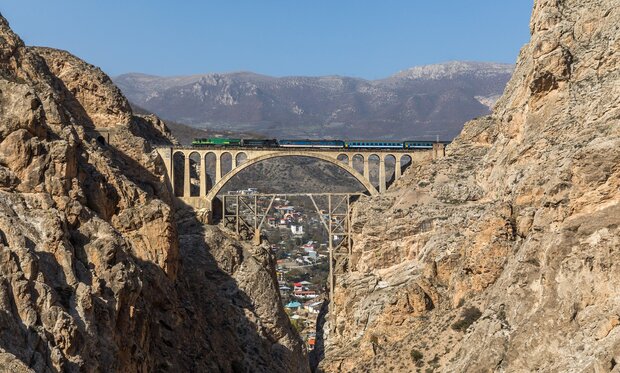Why Trans-Iranian Railway is a glittering engineering feat of the 20th century?

TEHRAN – The 1,394-kilometre-long Trans-Iranian railway was completed in 1938 after 11 years of massively challenging construction as it crosses four distinct climates, linking the glittering shores of the Caspian Sea to the fertile plains of the Persian Gulf.
Moreover, the railway joins together a striking tapestry of landscapes from soaring mountain ranges, deep gorges, salt deserts, old-growth forests, and plains. That was why experts from around the globe were presented with a technical challenge since the proposed route would cross four distinct climates.
More amazingly, chains of lengthy slopes take the single-track railway high into the mountains on either side of Tehran, which itself sits on a high plateau.
On July 25, 2021, the massive railway network was one of 33 new sites awarded World Heritage status by UNESCO, joining world eminent locations such as Venice, Machu Picchu in Peru, Yellowstone National Park in the U.S., and Ecuador's Galapagos Islands.
As mentioned by the UN cultural body, the railway is notable for its scale and the engineering works it required to overcome steep routes and other difficulties. Unlike most early railway projects, the construction of the Trans-Iranian Railway was funded by national taxes to avoid foreign investment and control.
According to a CNN article, the construction of the costly north-south railway was estimated at around $39 million at the time of completion (more than $2.7 billion in today's figures).
Some 224 tunnels of more than 76 kilometers in length; 174 viaducts and 186 smaller bridges were constructed between 1927 and 1938 to carry the railway across deep ravines and river valleys as it climbs to two 2,134-meter summits, a feat made possible by more than 70,000 workers, extensive mapping, and aerial photography.
Day-to-day difficulties for its construction included a lack of freshwater for mixing good quality mortar and concrete and keeping workers and train crews hydrated.
Furthermore, some tunnels had to be abandoned during construction after salt and gypsum deposits were found, forcing new routes to be located, while another tunnel through volcanic rocks could be neither blasted nor dug out with picks and shovels.
Heat, dust, altitude, and a shortage of water for steam locomotive boilers -- and their crews -- made the railway a very harsh environment. But by 1944 capacity was up to 6,489 tons per day, thanks to diesel locomotives and thousands of extra freight cars.
The railway -- which carries both freight and passenger trains -- runs roughly northeast from Bandar-e Iman Khomeyni via Ahvaz, Qom, and Tehran to Bandar Torkaman.
When it comes to tourism, highlights for those able to experience it include the Se Khat Tala (Three Golden Lines) spiral, where the line can be seen at three different heights thanks to loops and tunnels that help it to gain height, and the spectacular Veresk Bridge in the Alborz mountains.
Constructed in 1934/35 by an Italian contractor, the latter soars 110 meters above the valley floor on a 66-meter masonry arch.
Narratives say that to assuage fears that the slender structure would not be able to handle the weight of the trains, its Italian chief engineer and his family were instructed to stand underneath for the passage of the first train.

The rail network can be regarded as a turning point for comprehensive developments in Iran. Those developments include a wide spectrum of various economical, commercial, social, cultural, and even political aspects in a sensitive and important period of contemporary world history.
For those able to experience it, now or in the future, this far-fetched railway offers an unforgettable journey across a country that is still unknown to many and is often misunderstood.
AFM
Leave a Comment